Here, we tackle your most pressing dilemmas.
By: Diane Forden, Editor-in-Chief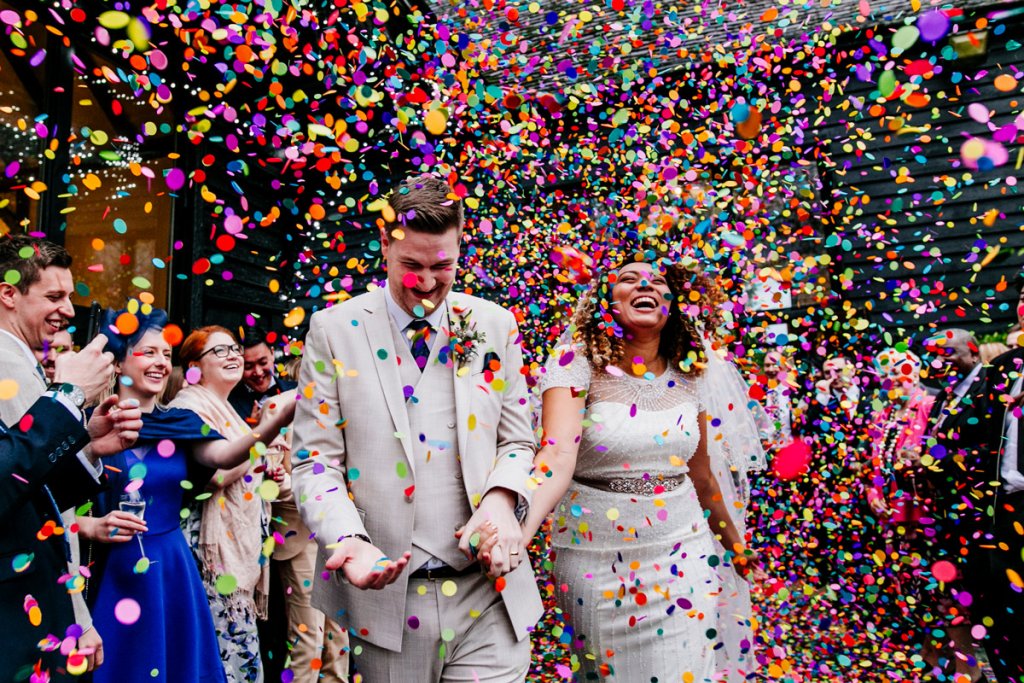
Photo Credit: Epic Love Story
1. What are the general rules for addressing wedding invitations?
2. How do we let guests know, tactfully, that their children aren’t invited?
3. Can I invite my ex to the wedding?
4. What are the best man’s responsibilities?
5. What are the maid of honor’s responsibilities?
6. What’s the proper order for the processional?
7. In what order should we do the traditional reception rituals?
8. Do we really need to feed the band?
9. Who is expected to give a toast?
10. When do we send thank-you notes, and what should we say?
Have an etiquette question? Leave a comment below!
Q: What are the general rules for addressing wedding invitations?
A: Addressing wedding invitations can seem a bit confusing, but the rules are relatively simple for most of the people on your guest list. Spell out titles and degrees (“Doctor”), and always use “Mr. and Mrs.” for married couples. If a couple is unmarried but living together, or is married but uses different last names, put their names on separate lines in alphabetical order. (Unmarried couples who do not live together should receive two separate invitations.) And, if a guest is in the military, the title of an officer whose rank is equal to or higher than a captain in the army or a lieutenant in the navy is placed next to his or her name with the branch of service below. You should also include titles for retired high-ranking officers, inserting (Ret.) after their names. And the branch of service should always be listed below the names of reserve officers on active duty, noncommissioned officers and enlisted persons.
As for children, it is unnecessary to include their names on the outer envelope of a wedding invitation. Instead, list them on the inner envelope with their parents (“Mr. and Mrs. O’Brien and Peter”). The absence of a child’s name altogether implies that he or she is not invited. However, many guests may not realize this and assume their children are invited. If you don’t want kids to come, be sure to spread the word that you can only accommodate adults at your reception, and do not leave a space with “Number of guests” to be filled in.
Finally, inner envelopes should be addressed to “Mr. and Mrs. Markham” without first names or addresses. Close relatives can be addressed as “Aunt Sue” or “Grandmother Smith” on the inner envelope only. And if a single person is invited with an unspecified guest, add “and Guest” to the inner envelope to indicate that he or she may bring a date (however, it’s always preferable to send an individual invitation to someone’s guest if you know who the guest will be).
<< More Top Wedding Etiquette Questions
Q: How do we let guests know, tactfully, that their children aren’t invited?
A: Inside the outer envelope of your wedding invitation be sure to include an inner envelope with only your invited guests' names on it. You may also want to enclose a handwritten note to relatives and friends explaining that as much as you would love to invite their children, you simply cannot do so because of space or cost limitations. If you wish, mention that children will be most welcome to attend the wedding ceremony. It's best to make certain, well before your wedding day, that all of your guests understand and will comply with your wishes.
<< More Top Wedding Etiquette Questions
Q: Can I invite my ex to the wedding?
A: As a rule, it’s usually recommended that ex-spouses not be invited to the wedding, even if you have an extremely amicable relationship. There are several reasons for this: Your child may be confused by her mother’s presence at your nuptials. Guests, too, may feel a bit uncomfortable and not know what to say to your ex (putting the focus on her instead of on you and your new wife). Finally, your former wife may not really want to see you tie the knot, and she’ll be in the uncomfortable position of having to decline.
However, I do believe that these situations should be assessed on a case by case basis, and if you and your fiancée have a great relationship with your ex, go ahead and send her an invite. (After all, Bruce Willis happily attended the marriage of his former wife, Demi Moore, to Ashton Kutcher!) Just be absolutely sure that your fiancée is OK with it. If she indicates even the slightest bit of hesitation or doubt, don’t do it. After all, you wouldn’t want your wedding day to be marred by any misgivings or regrets. You should celebrate your commitment to your new wife to the fullest.
<< More Top Wedding Etiquette Questions
Q: What are the best man’s responsibilities?
A: While the bachelor party may be what your fiancé and his best man considers the most important task, there are indeed other duties he is expected to perform. As the maid of honor is to the bride, the best man is the groom's biggest source of support. Generally he's the groom's brother or best friend (the groom's father is another popular choice).
In addition to staging the bachelor party, the best man helps coordinate the groomsmen's formal-wear fitting, picks up the groom's attire, confirms the honeymoon travel reservations, and orchestrates the rehearsal-party toasts.
On the day of the wedding, the best man makes sure the groom gets to the wedding ceremony site on time. He brings the bride's ring, holds the officiates fee until after the ceremony, and signs the marriage license as the groom's witness. Afterwards, he organizes the groomsmen for formal pictures, dances with the maid of honor, and makes the initial toast during the reception. Finally, he makes sure that the getaway car is ready and the couple's luggage is inside. After the celebration, he sees that all rented formalwear is returned.
<< More Top Wedding Etiquette Questions
Q: What are the maid of honor’s responsibilities?
A: The bride relies most heavily on the maid of honor (called a matron of honor if the woman is married). Before the wedding, the maid of honor's duties include coordinating the bridesmaid's activities (such as meeting for the dress fittings) and organizing the bridal shower. She should also offer to help the bride with any organizational wedding planning tasks, such as addressing wedding invitations.
On the day of the wedding, the maid of honor helps the bride dress and accompanies her to the wedding ceremony. She precedes the bride and her father down the aisle, arranges the bride's veil and train whenever necessary, and holds her bouquet at the altar. The maid of honor also carries and passes the grooms ring to the bride during the vows, and signs the marriage license as the brides witness after the wedding ceremony. At the wedding reception, she dances with the best man and helps to organize the bridesmaids for formal photographs. Before the couple leaves for their honeymoon, the maid of honor should help the bride change her clothes, and then make sure her dress and bouquet are taken care of until the bride returns.
In some cases, a bride will choose to have both a maid and a matron of honor. Generally the maid of honor's role takes precedence, but some brides divide the duties equally. Either is fine, as long as it's clear who does what.
<< More Top Wedding Etiquette Questions
Q: What’s the proper order for the processional?
A: In a Christian procession, the order of attendants is as follows: From the back of the church, your ushers proceed down the aisle first and in pairs. If there is an extra groomsman, he can lead the procession alone. Next, your bridesmaids walk down the aisle (starting several pews behind the groomsmen). If you have fewer than five bridesmaids, they walk single file, otherwise, in pairs. If theres a junior bridesmaid, she will be next (two junior bridesmaids walk together), followed by the maid of honor or matron of honor. If you have both a maid of honor and a matron of honor, they can walk together or separately. Behind them is the ring bearer, followed by the flower girl. You can also opt to have your child attendants walk together. Last but not least, of course, is you and your father or other escort.
Believe me, it sounds a lot more complicated than it is. Also, it should ease your mind to know that during the wedding rehearsal your officiate will tell your wedding party the proper order for both the procession and recession, and instruct everyone as to where they should stand or sit.
<< More Top Wedding Etiquette Questions
Q: In what order should we do the traditional reception rituals?
A: Since you want to make sure that you don't forget any significant activity at your reception, it's a good idea to plan ahead. In fact, at least a week or two before your wedding, finalize a reception schedule of events with your maître d', bandleader and wedding consultant (if you have one) so that all are aware of your arrangements and can plan accordingly.
Let's start with the special dances: The first dance between the bride and groom kicks off the dancing at the beginning of the reception, just after the wedding party has been announced (although you may also wait until after the meal has been served). Guests gather around as the couple dance to "their" song. The master of ceremonies or band leader will then ask your parents, your fiancé's parents and the rest of the wedding party to join in. Finally, the guests may also be invited onto the dance floor.
Next comes the toasting — guests are asked to remain standing, glasses in hand, while the best man has his say. Some brides and grooms may reverse that order, having the toast given just after the wedding party has been announced, so that the best man can then introduce the first dance. Yet another option is to have the toast given after the main course and just before the cake cutting. Whatever arrangement suits you best is fine.
At some point during the course of the celebration (but always after the first dance as husband and wife), the bride should have a farewell dance with her father, followed by the groom and his mother. Again, the master of ceremonies will announce these dances and, in both cases, a nostalgic, sentimental song is often chosen. (Keep in mind that each of you should make it a point to dance with your new in-laws and your honor attendants sometime during the festivities as well.)
Toward the end of the reception, just before or after the cake cutting, the bouquet and garter tosses take place. (These customs, of course, are optional and many couples may choose not to include them. Some brides prefer to throw the bouquet and skip the garter toss.) The master of ceremonies will ask all single women to join the bride on the dance floor for the bouquet toss, followed by the groom and the single men for the garter toss. And do not forget to alert your photographer to all of these scheduled events so that he will be prepared to capture every fun-filled moment.
<< More Top Wedding Etiquette Questions
Q: Do we really need to feed the band?
A: Many bands, photographers, videographers and other wedding professionals who will be at the reception for the duration of the event will stipulate in their contracts that they must be fed. (You do not have to provide them with alcoholic beverages, however, nor should you — they are working, after all.) And even if they don't demand it, serving them a meal is a nice gesture — such thoughtfulness may also guarantee you better service.
Before you panic about the extra cost, ask your caterer — many will feed "the help" for half price. Or you might simply provide band members and the like with sandwiches or something less expensive than the main entrée.
<< More Top Wedding Etiquette Questions
Q: What’s the skinny on toasts and speeches?
A: Traditionally, it's the best man's responsibility to propose the first toast to the bride and groom. Before the main meal is served at the reception, he is introduced by the master of ceremonies (often the bandleader or maître d'). He then asks everyone (except you and your groom) to stand. The type of toast he gives is personal. It can be sweet and brief or a bit lengthier, amusing and anecdotal. The sentiment, however, should always be for your future happiness. After his speech, the best man raises his glass and invites other guests to do the same.
If there are other members of the wedding party who wish to give a toast, they may do so, provided the number of toasts is kept to a minimum and the time spent well-wishing is not too long (remember, your guests will be hungry!). After the toast, you and your groom may then rise, express your gratitude, and toast each other.
<< More Top Wedding Etiquette Questions
Q: When do we send thank-you notes, and what should we say?
A: Promptness counts when it comes to thanking friends and family for their gifts. You may have heard that you have up to a year after your big day to send out your notes, but that’s not true (sorry!). Here’s a timeline for all your special occasions: engagement party and shower, within two to three weeks of the festivities; gifts sent before the wedding date, as soon as possible, but definitely before the wedding; gifts given on the day itself, within three months; gifts received after your wedding, within two to three weeks.
As far as what to say, be gracious and sincere. Also include several elements, such as mentioning the gift by name, referring to how you’ll use it and expressing your appreciation. For gifts of money, don’t state the amount, but do mention the fact that it’s a monetary gift as well as how you plan to use it. And ask your groom to help out. While you should pen all bridal shower thank-yous yourself (unless you have a coed shower), your groom can do some of the engagement and wedding notes. You write the notes to your family and friends, and he does the ones to his.

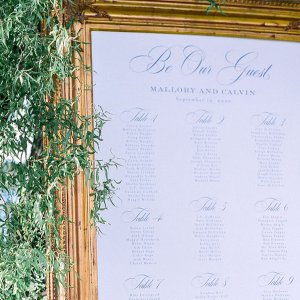
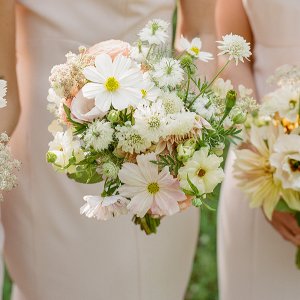

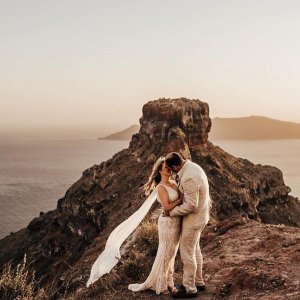

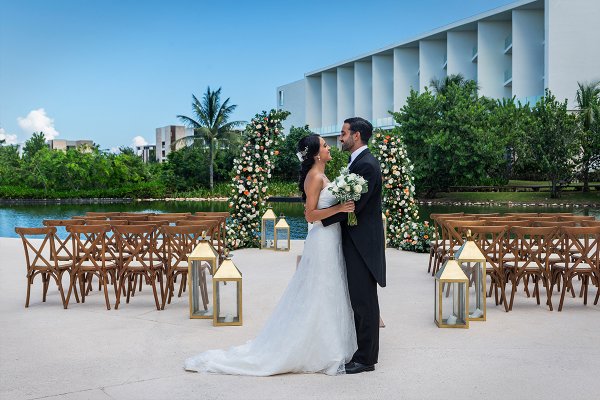

Comments
brii805 replied on Permalink
Black tie Required
Lisa Ashcraft replied on Permalink
Aunts step daughter